
by Coach Adolfo Salgueiro | Jun 28, 2022 | Article, List, Reflection
By Coach Adolfo Salgueiro
There are countless valid reasons why we engage in running. Health, weight loss, social interaction, doctor’s orders, keeping stress at bay, we are dopamine junkies, or fill in the blank. And, unless you have an underlying physical condition or health issue, most people can complete a 5K or even a 10K race with no major problem. More adventurous runners can get to the half marathon or even marathon club. But if you want to become more than a check-it-off-the-bucket-list runner, if you want to develop into a lifelong athlete, if you want to constantly assess your limits; your running must include one unavoidable characteristic: It’s gotta be fun!
You would be surprised at how many runners focus so much on results, times, Instagram likes and stats that never realized they could also be having fun.
Explaining why it should be fun is a waste of space. It is so obvious: if it stops being fun, then you will quit. So, I will use my space in this post to list eight basic tips you can apply to make sure you won’t get bored or burnt out in the long run (pun totally intended).

There are no podiums during training sessions. Don’t become that runner (Photo Pexels)
1 – Find a running partner or group: Even though many people run because they want to be alone and take a break from the world, someone to run with can make a world of difference in your athletic life. Being a member of a team may not work for everybody but running buddies will change your life.
2 – There are no podiums during training sessions: We all know that one person who runs all out in each single training session. The one person who will accelerate and refuses to let you pass. Well, that person is on its way to injury, burnout or both. Don’t become that person.
3 – Let the GPS watch do what it was designed to do: Always remember the GPS watch is an indicator of your performance, not the director of your training. It is the GPS watch that serves you, not the other way around. Same principle applies to Instagram, Strava and all other social media platforms.
4 – Learn about the sport: You don’t have to become an erudite on the subject, but you should know the basic elements of running physiology, science and mechanics so you can monitor yourself as you progress and prevent injuries.
5 – Register for a race: Maintaining a race in your schedule is the biggest motivation to keeping you focused on your training. If you know you must run X distance on X day and you paid X Dollars for it, then most likely you’ll plan ahead and make it happen.
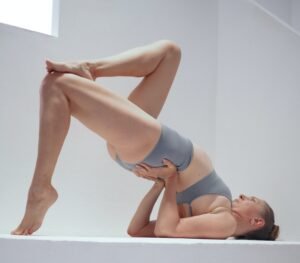
Yoga is one of many options to cross train and get better at running (Photo Pexels)
6 – Cross train: As much as we love running and it is our primary sports activity, you won’t last long if all you do on behalf of your running is run. Strength training, yoga, biking, swimming or walking are just a handful of alternatives that may complement your overall program to make you a better runner.
7 – Vary the elements in your route: Switch your running course, run somewhere else, change your daily distance, vary your speed, switch the surface in which you run, the time of the day, get rid of those old, beat-up shoes. This will help you keep it fresh and exciting.
8 – Recover properly: Make sure your body has recovered from your previous workout before you take it for another hard running session. Rest and recovery are as important to your running as running itself. Recovery will keep you fresh, injury free and thus, looking forward to your next run.
Peter Magill sums it up like this in in his book Build Your Running Body: “In the long run, it’s the combination of fun and results that keep your motivation from waning. When you are accomplishing your goal and having a blast, too, chances are that you’ll keep going.”

by Coach Adolfo Salgueiro | Jun 14, 2022 | Article, Reflection, Science
By Coach Adolfo Salgueiro
As athletes, we have become so accustomed to technology that is has become an intrinsic part of our daily activity. Our GPS watches capture more data about more metrics than we even know what to do with. Even worse, we feel the need to share every single mile, every single plank and every single cross training session with the world, via our social media channels.
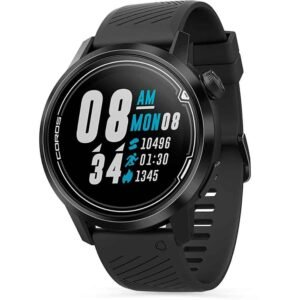
Your GPS Watch can measure many parameters, but only you can measure your effort.
As great as it is to have all our metrics a screen-tap away, the need to impress running friends and strangers with our daily achievements could be in detriment of your progress as runners. We know that slow runs are not sexy, they don’t get as many likes. We understand that running 11-minutes miles when you are a well-known Sub-4 marathoner is not what your brand is all about. But, when 80% of your training is supposed to be done at an easy pace, you either make peace with it or stop posting your easy runs. But I digress.
The time has come for us runners to understand that pace and effort are two different parameters. The primary measuring boundary is not how fast you are running, but how hard your body is working at any given time. The latter measurement is called the Perceived Rate of Exertion (PRE). It is also known as Rate of Perceived Effort (RPE).
According to the CDC, Perceived Exertion is how hard you feel like your body is working. It is based on the physical sensations a person experiences during physical activity, including increased heart rate, increased respiration or breathing rate, increased sweating, and muscle fatigue.
PRE can fluctuate dramatically depending on the athlete and the circumstances of any particular run. A 50% effort after a restful, full night of sleep, on a flat surface, at sea level during a cool, dry spring day, will have you running faster than if you ran a hilly course, at noon, in the middle of the summer, at 90% humidity, right after a big fight with your spouse.
There are a handful of scales to measure your PRE, and regardless of the one you prefer, they are all subjective and they end up evaluating the same thing, just using a different label. The most prominent are the Borg Rating of Perceived Exertion Scale and the RPE Scale.

Click on the image to expand
The Borg scale was developed by Swedish researcher Gunnar Borg, as a tool for measuring an individual\’s effort and exertion, breathlessness and fatigue during physical work. Its scale goes from 6 through 20 and it is set to roughly correlate heart rate. But, as revolutionary as it was when first proposed, that 6-20 range results very awkward to visualize. Plus, not everyone’s heart rate rests at 60 nor it maxes out at 200. Even experienced athletes have a challenging time figuring out where they are from 6-20 at any given moment when 6 is sitting/resting while 20 is maximal exertion. See the accompanying chart.
I personally prefer and recommend to my trained runners, an RPE Scale that goes from 1 to 10. This is nothing but a modification of Borg, but much easier to visualize both in theory and in practice. A Training at 5/10 RPE is at 50% of maximum effort instead of a 12/20 PRE. When you need to do a hill repeat at 7/10 RPE it is easy to figure out where 70% of maximum effort is, rather than a 16/20. See accompanying graphic.
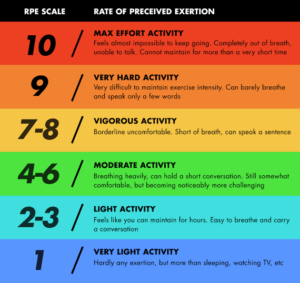
Click on the image to expand
Because the cardinal sin of running is going too hard on easy days, the key to these scales is to figure out where your easy pace fits in. When your coach asks you to “run easy”, understand that you are asked to run at a 4-5/10 effort (40 to 50% of maximum effort), or whatever other parameter your coach has set up for that day. This is the sweet spot. It will feel like walking if you are not used to easy running but, with time, it will serve you well. Guaranteed.
As cliché as it sounds, always remember the GPS watch is an indicator of your performance, not the director of your training. It is the GPS watch that serves you, not the other way around. Stick to your plan and don’t get exerted more than prescribed. It is the key to maintaining yourself fresh, rested, injury-free and ready for hard workouts.
Have faith in the process. In a Runner’s World article from October 2021, Grete Waitz, former marathon world-record holder, Olympic medalist and nine-time winner of the New York City Marathon, was quoted stating: “Hurry slowly”. Believe me, she knew what she was talking about.
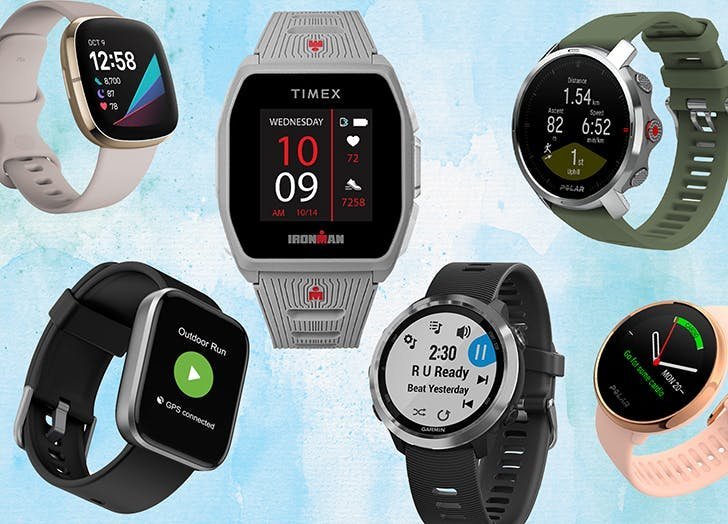
by Coach Adolfo Salgueiro | Dec 7, 2021 | Article, Coaching, Reflection
By Coach Adolfo Salgueiro
All of us runners, regardless how dedicated we are to our craft, at times become experts in creating the perfect excuse to justify not running on a specific day. There are some valid excuses, of course. No one expects you to run during an electric storm or when the temperature is 120 or -50 degrees?
What it is not and will never be a valid excuse is not having a functioning GPS watch. It doesn’t matter if it doesn’t have enough charge, if you forgot it at home, if the wrist band broke or fill in the blank. There are plenty of options to get around this minor setback and get your training in.

If you your battery doesn’t have enough charge for your run, it is your fault. Assume the msitake and go run.
The following is a list of ways to overcome obstacles when it comes to GPS watch issues, so you can go train, anyway:
1 – The watch doesn’t have enough charge for my run: That is your fault. Own your mistake. Run on a known course and when you get home, do the simple math necessary to project what your watch was able to record to what you know is the distance you ran. Option B is to run with a buddy and get screen shots of the activity.
2 – I forgot or misplaced my watch: This is your fault. Own your mistake. Your run doesn’t need to be recorded for posterity to benefit your health or make you a better runner. What really counts is that you do run. One day without posting it in Instagram or Strava shouldn’t hurt your ego that much.
3 – My watch is not acquiring the satellites: It happens. Sometimes you have the time to wait a bit longer or restart your watch. Sometimes your group is leaving, or the race is starting. Get moving without the satellites and when they hit, start your watch. Once at home, do the simple math necessary to project what your watch was able to record and have an approximate run. It is better than not running.
4 – How am I supposed to know my pace without GPS? As many benefits as a GPS watch has, the main drawback is that runners have forgotten to run by feel. Take this as an opportunity to have fun, run by perceived effort for a change, without a gadget dictating your pace and effort. Feel the fun of an easy pace, or the thrill of comfortably pushing if that is your scheduled workout. Have fun with Fartlek or just, for a change, enjoy the view and remember you run because it is fun.
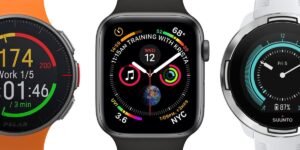
GPS watches are wonderful additions to any runners arsenal, but they have made us forget the freedom of running by feel.
5 – I can’t do my interval training without a functioning watch: Sure, interval training without a watch is hard. But if you don’t have it with you, most likely it is your fault, and you need to own your mistake and find a solution. There is an alternative, though. Boring but available. It is a treadmill. If you don’t have a treadmill, do your intervals based on available landmarks. To the third tree, to the next traffic light or to whatever is accessible and fits your plan for the day.
6 – My dog ate the watch: Check issues 1 through 5 above, overcome your objections, lace up and start running
One more thing. Most of us have additional apps in our phones that can assume on the work for a day: Strava, MapMyRun, RunKeeper, etc. There are many more and most of them have a free version. If you don’t run with a phone and can’t live with the most updated data, run with the phone that day and voila!!! Issue resolved.
As you can see, all excuses regarding your GPS watch can be easily overcome. So, remember that nobody came back from a run hoping they would have stayed at home doing nothing. Each run is transformational. Don’t miss on it because of an inconsequential obstacle.










